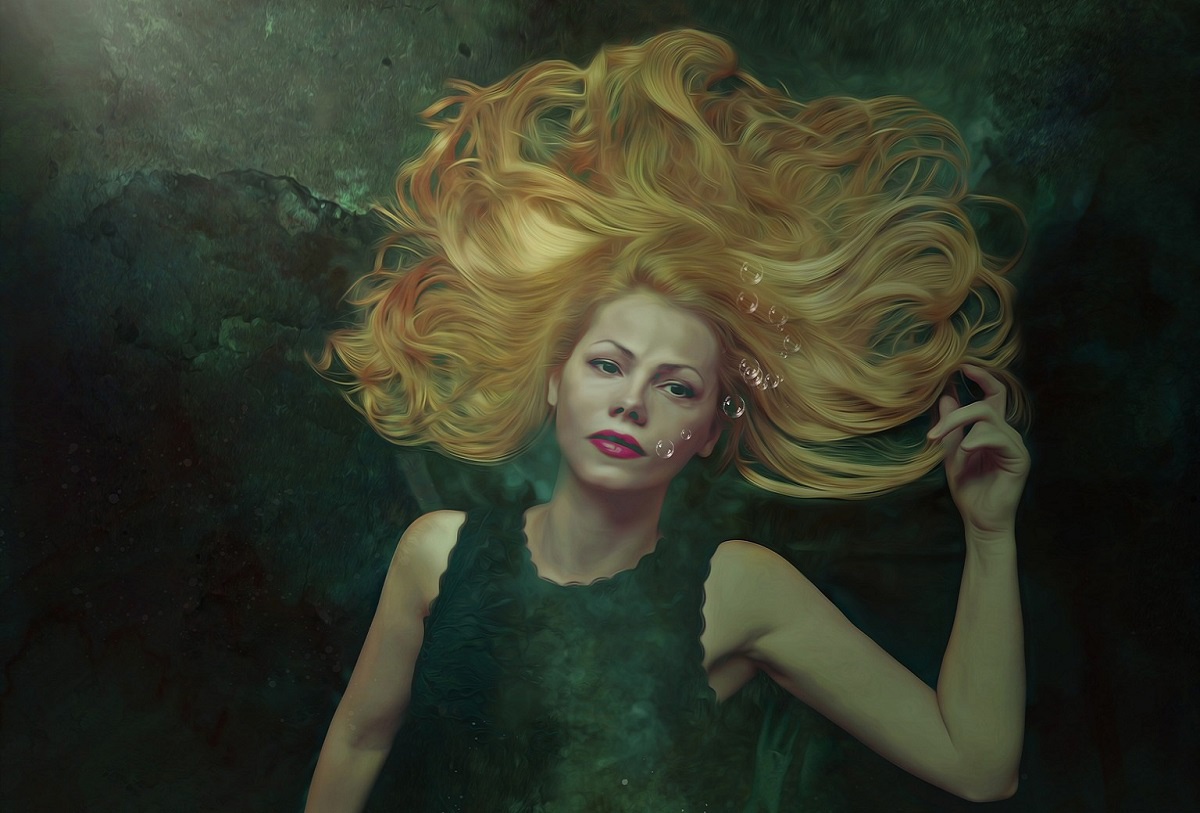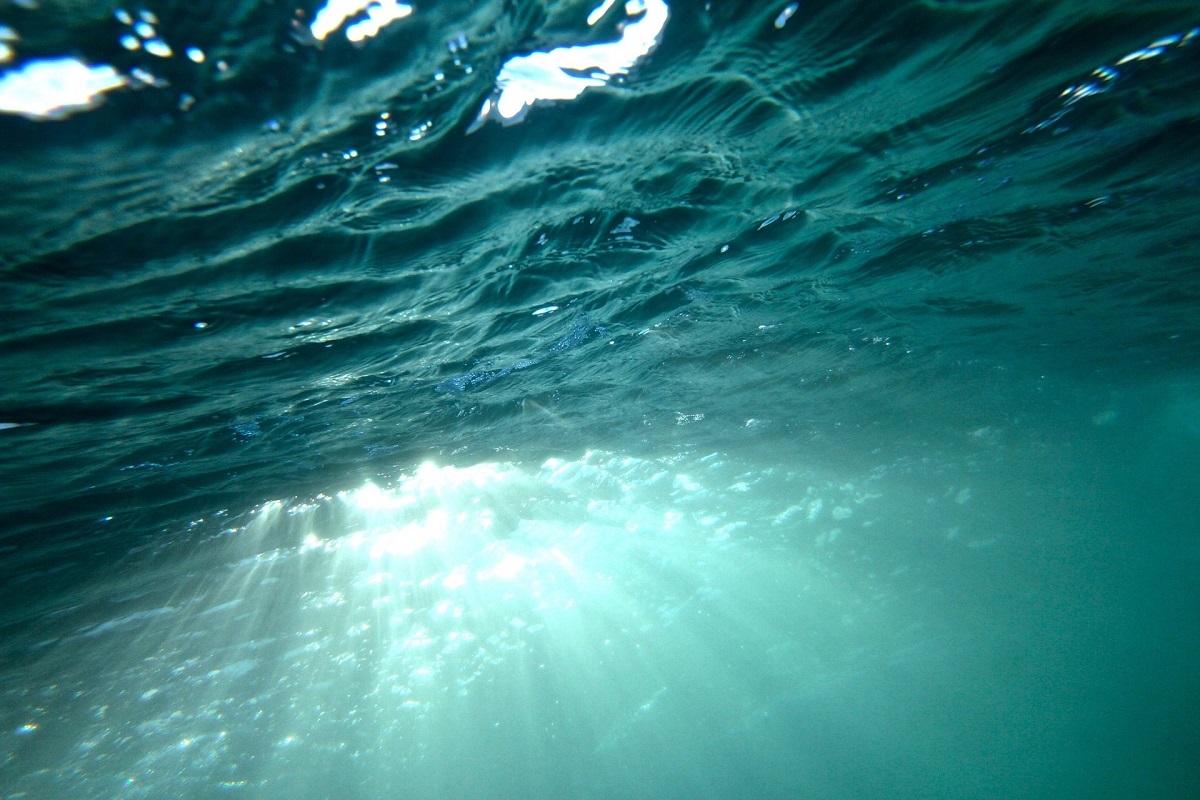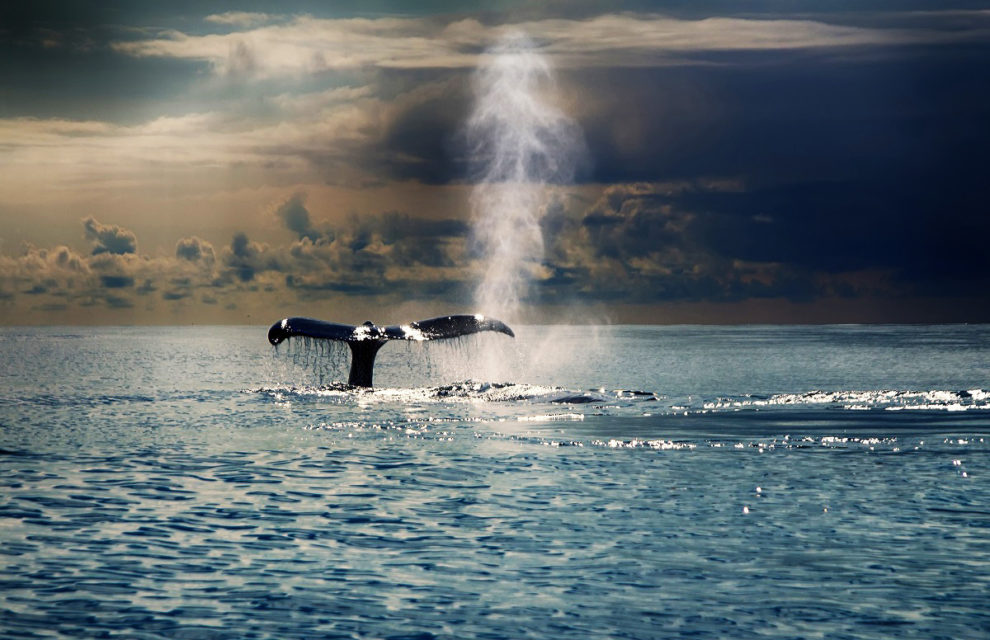I remember an evening on board a cargo ship, heading down the St. Lawrence River, just past Tadoussac. We were bound for the Arctic on a supply voyage. The pom-pom-pom of the engines astern. The rush of waves, shimmering with the weird glow of phosphorescent algae suspended in the water. A puff now and then of fir trees on the shore, mingling with the scent of salt droplets borne in the summer breeze.
I stood alone by the rail, amidships. I could just make out the gash on land where the Laurentian Mountains roll down to the sea, and the freshwater Saguenay merges with salt water. As the moon rose to the east over Trois-Pistoles, I spotted two enormous creatures. Were they humpback whales, feeding at the surface, blowing a column of silvery mist in the moonlight, then diving?
I headed for the stern, to watch the propeller lob rounded masses of water up to the surface, hissing and gurgling and frothing. This movement of water reminded me of what moves below the surface of our imagination: instincts and memories, deep-seated emotions we might not even recognize in our waking hours; our loves, fantasies and fears, unfathomable reservoirs of anxiety and distress, mindscapes of the dreamworld, and motivations driving us forward.

Much of the human psyche is hidden, out of view, beyond direct knowing. Where do metaphors come from? At moments like this, voyaging at sea, I just know. They come from this other world, below the surface, where we encounter sirens and other primeval creatures of the deep that inhabit our inner life. Dreams light up our imagination, feeding us with new symbols, that help us navigate around experience during our waking hours.
In ancient Greece, a “metaphor” meant a “transfer” or “exchange.” According to Aristotle, “Metaphor consists in giving the thing a name that belongs to something else; the transference being either from genus to species, or from species to genus, or from species to species, or on grounds of analogy.” At the same time, according to Paul Ricoeur, metaphors are complex figures of speech that involve aspects both of resemblance and of reference, and even, in some cases, of the “substitution” of one thing for the other. Chaim Perelman and L. Olbrechts-Tyteca also note that in a metaphor, one may find the fusion of the theme and what stands in for it, “bringing their spheres closer together.”
In addition to Aristotle’s analogy, and Ricoeur’s resemblance and substitution, metaphors may be used as intuitive descriptions, as equations (or identities) between two terms, and as prescriptions of how things ought to be. The difficulty with metaphor is that these crossovers from description to equation to prescription seem to operate at an unconscious level.
I have occasionally come across three-way metaphors.
In a recent blog, I mentioned developing tactile metaphors so that one of my university students, who was blind, could touch them and get the point I was trying to make. The experiment worked. There is a lot more to metaphors than mere language.
In earlier times, I spent five years working for the BBC World Service, doing freelance dispatches, two-ways, features and tape-docs. At the BBC, I got my basic training in writing: they taught me to compose “word-pictures.” I had never heard the term “word-pictures” before: I felt it was an ambivalent term, since it opened the way to story-telling but already signalled the limitations of language.
As a writer and translator, I probably should uphold the value of language, but I often find words wanting. Music goes more directly to the emotions than words. Film appeals to people on many different levels at once, and therefore strikes me as a more complete art than writing.
I am fascinated by this other world of myth and metaphor, lying out of view, in the depths.

The feature image at the top of this blog is courtesy of Shutterstock

